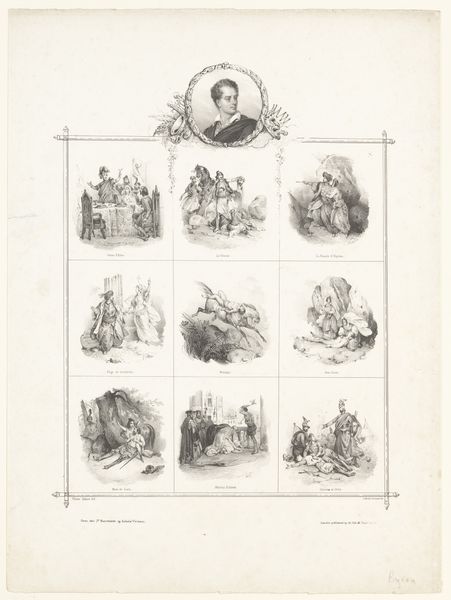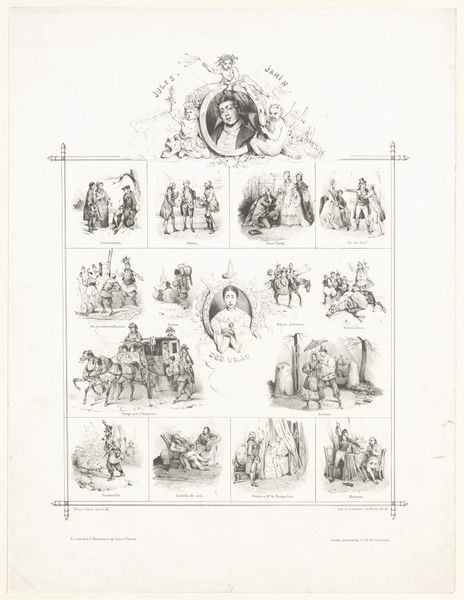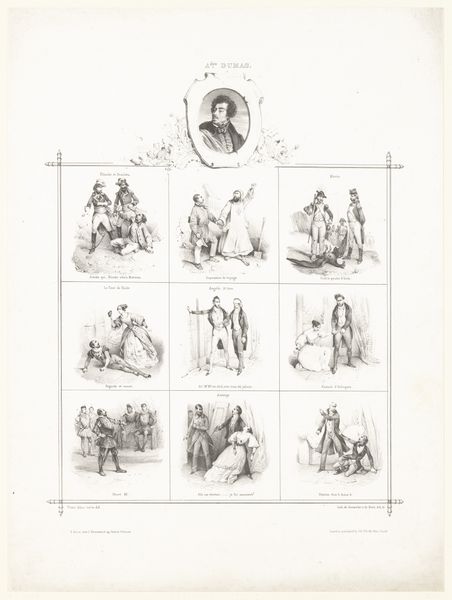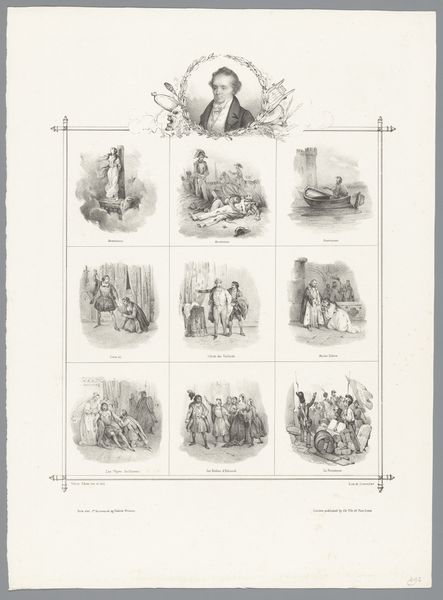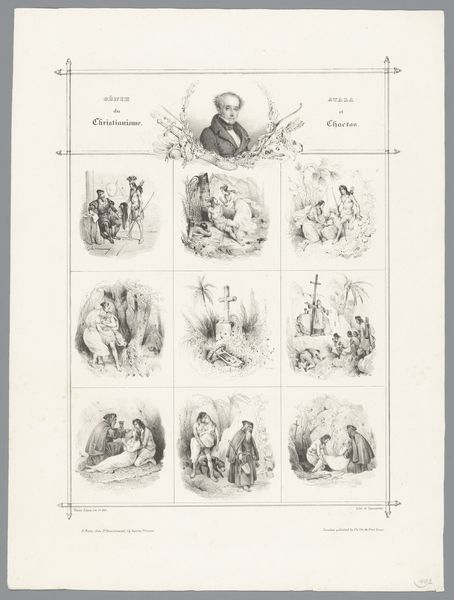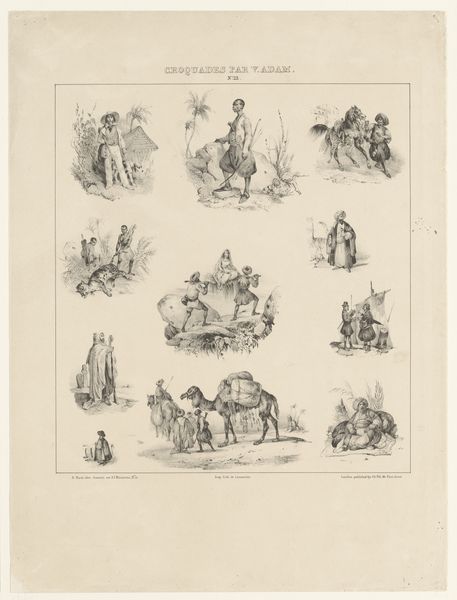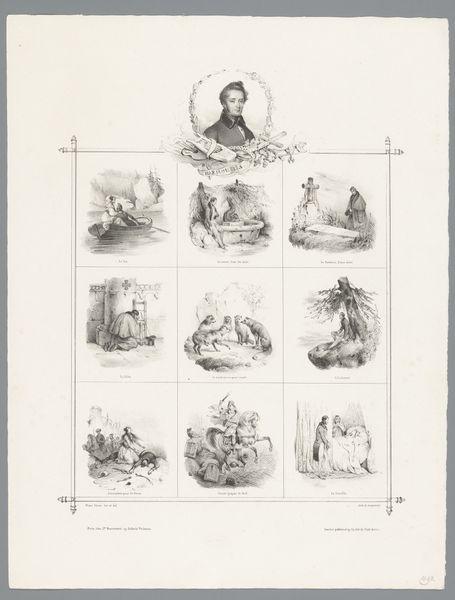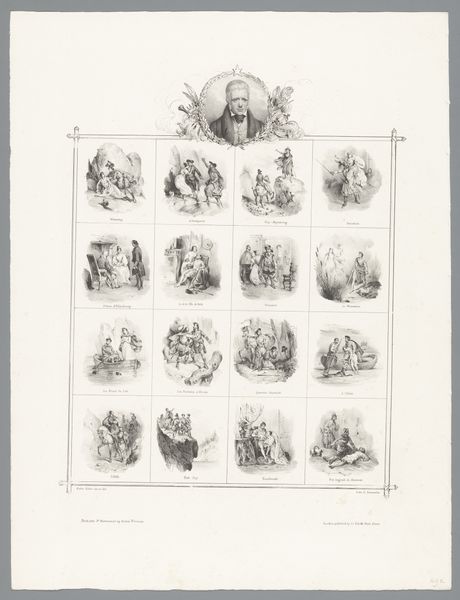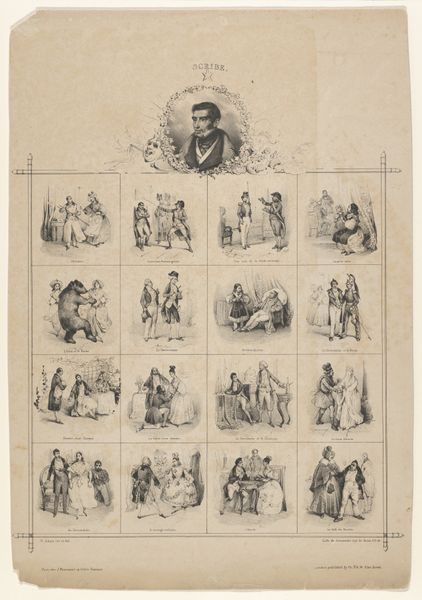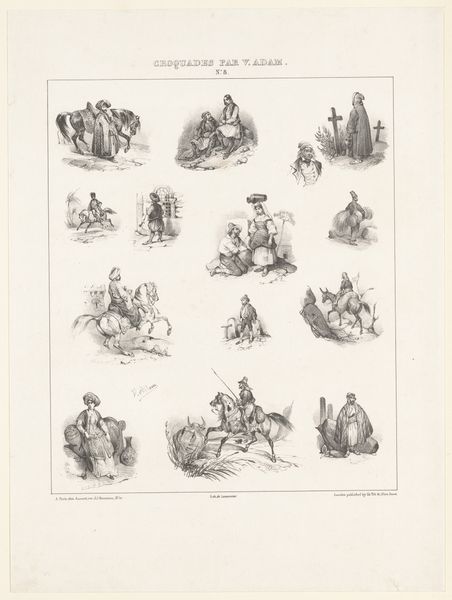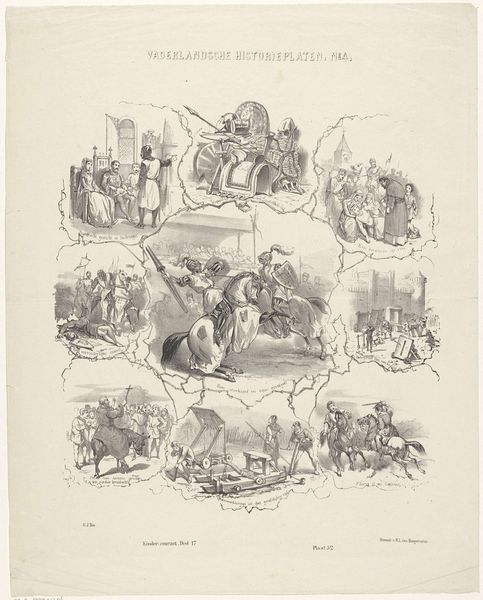
Portret van James Fenimore Cooper en negen voorstellingen uit zijn werken 1834
0:00
0:00
drawing, print, ink, engraving
#
portrait
#
drawing
#
narrative-art
# print
#
figuration
#
ink
#
romanticism
#
line
#
history-painting
#
academic-art
#
engraving
Dimensions: height 359 mm, width 275 mm
Copyright: Rijks Museum: Open Domain
Editor: This is "Portrait of James Fenimore Cooper and nine scenes from his works," a print made by Victor Adam in 1834. I find it a bit…stark. What do you see in this piece beyond a series of illustrations? Curator: Beyond the literal depictions, I see a powerful commentary on early American identity formation, particularly concerning the romanticized but deeply problematic relationship between settlers and Indigenous peoples. Notice how Cooper, framed centrally, is flanked by caricatures of Indigenous figures. This visual positioning immediately sets up a power dynamic. Editor: So, you’re saying it's not just a portrait and scenes from his novels? Curator: Exactly. It's about the narrative being constructed. The scenes, while seemingly adventurous, likely reinforce colonial perspectives on expansion and control. Consider the context: Cooper’s novels often placed white protagonists at the center of narratives involving Indigenous characters, perpetuating a skewed view of history and dispossession. Editor: It seems romantic, but that's a pretty critical perspective. How does the artwork's style affect its message? Curator: The detailed engraving lends a sense of realism, perhaps aiming to legitimize these narratives. But let’s question that realism. Whose reality is being presented? The lack of Indigenous voices or perspectives within these scenes underscores a profound silence and erasure. Think about what stories are being told, and more importantly, whose stories *aren’t* being told. Editor: So the romantic style might actually mask a more complex message of cultural dominance? Curator: Precisely. And that tension is something we need to unpack when we look at art from this period. This image isn’t just an illustration; it's a historical document that reflects the ideologies and power structures of its time. Editor: I'll never look at historical illustrations the same way. It’s like there's a whole other layer beneath the surface. Curator: Absolutely. It's about critically engaging with the narratives art presents, understanding their social and historical roots, and amplifying the voices that have been historically marginalized.
Comments
No comments
Be the first to comment and join the conversation on the ultimate creative platform.
